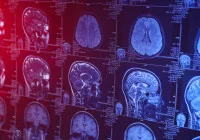Healthcare systems across the world are contending with rising levels of clinician burnout, a problem intensified by heavy administrative workloads, inefficient digital systems and increasing demands on time. Although technology has often been identified as a major contributor to these pressures, it also offers significant potential to support workforce well-being when designed and applied appropriately. A shift towards human-centred design in health IT presents a way forward, focusing on usability, adaptability and the everyday needs of clinicians. By rethinking digital tools in this way, organisations can reduce the strain on staff, encourage wider adoption of technology and help create a sustainable foundation for patient care.
Redefining Technology through Human-Centred Design
Digital platforms and electronic health record systems have historically been developed with compliance and billing requirements in mind. This has left clinicians managing systems that were never primarily built to support their practice. Interfaces that are unintuitive, data entry processes that require duplication, and workflows that fail to align with real clinical routines have contributed to the perception that technology makes care delivery harder rather than easier.
Human-centred design offers a way to change this trajectory. By focusing on how clinicians actually work, systems can be adapted to fit daily practice rather than forcing users to adjust to rigid platforms. Intuitive interfaces reduce unnecessary cognitive load, allowing clinicians to dedicate more attention to patients. Automated processes and AI-driven tools lessen the burden of documentation, supporting faster and more accurate record-keeping. Another critical component is the creation of continuous feedback loops, where frontline staff are engaged in testing, refining and shaping digital tools. This cycle ensures technology evolves in response to the realities of care, making improvements meaningful and sustainable.
When applied consistently, these principles transform technology from a barrier into an enabler. Instead of slowing down clinicians, systems become more natural to use and more supportive of patient interaction, creating an environment where technology actively contributes to better care outcomes.
Innovation to Reduce Burnout
Human-centred design is not limited to theory but is increasingly being applied in practice to address the pressures faced by clinicians. One example is the use of ambient documentation technology. These tools employ natural language processing and generative AI to act as digital scribes, listening to patient-provider interactions and producing structured draft notes.
Must Read: Unified Communication: A Cure for Clinician Burnout
By automatically capturing the core details of clinical conversations, ambient documentation reduces the time clinicians spend entering data manually after each encounter. This has two important effects. First, it allows providers to focus fully on engaging with patients during visits without distraction from keyboards or screens. Second, it delivers a structured starting point for documentation, so clinicians review and finalise notes rather than beginning with a blank page.
Initial results from implementations of this technology highlight several benefits. Same-day encounter closure rates improve, as clinicians no longer face the accumulation of unfinished records at the end of the day. Satisfaction and well-being among providers rise as the weight of documentation is eased. The completeness and accuracy of patient records are also strengthened, supporting continuity of care. Together, these outcomes show how thoughtful application of AI and automation can restore a sense of balance in clinical practice, helping clinicians reconnect with the core purpose of medicine.
Such developments illustrate the potential for technology to serve as a support mechanism rather than an additional burden. When designed with the workforce in mind, digital tools not only improve efficiency but also contribute directly to reducing burnout and sustaining the joy of practice.
Building Human-Centred Systems
The adoption of individual tools is only one part of the wider transformation required in healthcare technology. Large-scale redesigns of health IT platforms, particularly electronic health record systems, offer opportunities to embed human-centred principles more comprehensively.
A central strategy in such projects is inclusive design. By involving a wide spectrum of staff early in the process—clinicians, nurses, allied professionals, operational leaders and technical teams—organisations ensure that system development reflects the realities of those who will use it daily. Interdisciplinary collaboration prevents the creation of one-size-fits-all solutions and instead builds platforms that consider the needs of different roles across the care pathway.
Iterative testing is another important component. Rather than implementing a static system, organisations adopt cycles of prototyping, feedback and refinement. Each release becomes part of a continuous improvement process, ensuring the platform evolves alongside clinical needs and feedback from real-world use.
Integrating AI-driven documentation within redesigned systems further strengthens the impact. Automating routine aspects of charting reduces cognitive burden and saves time, creating a more manageable workload. Complementing these features with comprehensive training and support enables both staff and patients to gain the full benefit of new technologies. By building confidence in digital tools, organisations increase adoption and maximise value.
Together, these strategies represent a shift from viewing electronic health records as compliance-driven systems to positioning them as platforms that empower clinicians and support a more efficient, resilient workforce.
Healthcare technology is at a critical turning point. Poorly designed systems have long been a source of frustration, adding to administrative burdens and fuelling burnout. Yet the same technologies, when shaped by human-centred design principles, can reduce strain, increase efficiency and support workforce well-being. The development of ambient documentation tools and the broader redesign of health IT platforms demonstrate how digital transformation can move in this direction. By prioritising usability, engaging diverse stakeholders and committing to continuous improvement, organisations can create environments where technology serves its intended purpose. The result is not only reduced burnout but also stronger, more sustainable healthcare systems that better serve both staff and patients.
Source: HealthData Management
Image Credit: iStock










